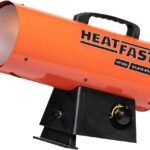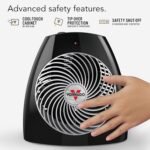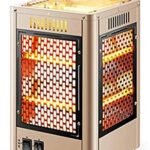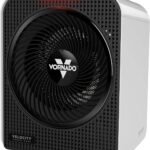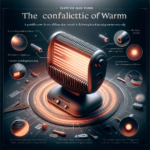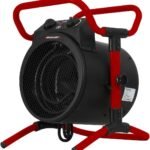Navigating the world of home appliances can feel overwhelming, especially when it’s about ensuring your home has a consistent hot water supply. You’re probably here wondering just how many tankless water heaters it takes to run your entire home comfortably. Fear not! This guide has been crafted to answer your queries and provide you the insights needed to make an informed decision on the number of tankless water heaters fit for your humble abode.
Understanding Tankless Water Heaters
When it comes to heating water for our homes, we’re enjoying greater variety and efficiency than ever before. One of these innovative solutions is the tankless water heater.
Definition of tankless water heaters
Unlike traditional water heaters, which store and gradually heat water in a large tank, tankless water heaters heat water directly without any storage. Whenever you turn on a hot water tap, cold water travels through a pipe into the unit, and a gas burner or an electric element heats the water. Thus, tankless water heaters deliver a constant supply of hot water, without the need to wait for a storage tank to fill up with enough hot water.
How tankless water heaters work
The mechanics of a tankless water heater are relatively simple. When you open a hot water tap, the flow of water triggers the heater’s operation. In gas-fired heaters, a burner heats the water. Electric models, on the other hand, use electric resistance coils. Sensors in the heater adjust the flame or electrical flow to maintain a precise temperature. When the tap is closed, the unit shuts off, thus conserving energy.
Benefits of using tankless water heaters
Tankless water heaters are gaining popularity for several reasons. One of the most significant benefits is limitless hot water. Such systems are also energy-efficient, saving you costs in the long term. Additionally, they are compact, taking up less space than conventional water heaters. Moreover, by eliminating the danger associated with tank ruptures, they prove safer. Finally, their lifespan, which can extend beyond 20 years, far exceeds that of tank models.
Drawbacks of tankless water heaters
Despite their benefits, tankless water heaters also have some drawbacks. The primary inconveniences include higher upfront costs for both the unit and installation. Moreover, some larger households may require multiple units or a unit with high flow rate to meet water heating needs. Also, gas-fuelled units need to be ventilated, which can add to initial costs. Finally, mineral build-up can affect performance if not maintained regularly.
Determining Your Home’s Hot Water Needs
Before investing in a water heating system, it’s crucial to determine the amount of hot water your home needs to function smoothly.
Calculating hot water demand
Calculating the hot water demand involves considering several factors, such as the number of people living in the home, the number of bathrooms and kitchens, and the types of appliances used. Every household’s needs are different, so it’s important to look at your unique situation.
Factors influencing hot water needs
Several factors influence the hot water needs of a household. These include the number and types of hot water appliances, the size and occupancy of the house, and lifestyle habits such as time and length of showers, frequency of laundry, and dishwasher use.
Hot water usage in different parts of the house
Different parts of the house consume hot water at varying rates, with bathrooms using the most, followed by kitchens and laundry rooms. The shower and washing machine, respectively, are often the major culprits.
Peak demand periods for hot water
Peak demand periods, such as morning hours when everyone in the house is getting ready for the day, or the evening bath and dish-washing time, are moments when the hot water demand is highest.
Sizing Tankless Water Heaters
When selecting a tankless water heater, it’s crucial to choose the right size to meet your specific needs and maximize efficiency.
Different sizes of tankless water heaters
Tankless water heaters come in various sizes, categorized by their flow rate, which is the volume of water they can heat at any given time, usually measured in gallons per minute (GPM).
How to determine the right size of tankless water heater
The sizing depends on two critical parameters: the required flow rate and the temperature rise, which is the difference between the incoming water temperature and the desired output temperature.
Understanding flow rates and temperature rise
Flow rates for typical hot water activities range from 0.5 GPM for a faucet to 3.0 GPM for a shower. You can calculate the maximum flow rate for your house by adding up the flow rates for all the devices you plan to use simultaneously. Temperature rises can vary based on regional climate, but it’s safe to assume a rise of 50-70 degrees Fahrenheit.
Environmental considerations that can impact heater size
Colder incoming water temperatures in winter or in colder regions mean the tankless water heater must work harder to bring the water up to the desired temperature, implying that a larger or more powerful model might be required.
Single Vs Multiple Tankless Water Heaters
One can opt for a single or multiple tankless water heaters based on their household requirements and budget constraints.
When to opt for a single tankless water heater
For smaller households or homes with fewer hot water needs, a single, appropriately-sized tankless water heater can comfortably handle the demand.
Scenarios where multiple tankless water heaters are needed
In larger homes or in those with high hot water demands, installing multiple tankless water heaters, or ‘zoning,’ helps. This means setting up separate units for different areas, e.g., one for bathrooms and another for the kitchen.
Pros and cons of having multiple tankless water heaters
While multiple units ensure a smooth supply of hot water to all parts of the house, they can be expensive due to higher initial setup costs. However, they offer the benefit of not affecting the entire house if one unit needs maintenance.
Cost comparisons between single vs multiple units
While single units are cheaper to install, the cost-effectiveness of multiple units lies in their ability to save on energy costs over time, thanks to their tailored usage according to the specific needs of different house segments.
Installation Considerations for Tankless Water Heaters
Proper installation of your tankless water heater ensures optimal operation and a longer lifespan for the unit.
Ideal locations for tankless water heater installations
The ideal installation location for a tankless water heater is near the most frequent point of use. This shortens the distance between the heater and the tap, reducing the time taken for the hot water to reach you.
Plumbing requirements for tankless water heaters
Tankless heaters should be installed in an area with proper ventilation (for gas units) and access to a sufficient water supply. Some models may require larger diameter pipes or special venting materials to function optimally.
Electrical or gas requirements for tankless water heaters
Electric models require an appropriate power source, such as a dedicated circuit breaker. Gas models conversely need proper venting and a suitable gas line.
Comparing Tankless Water Heaters With Traditional Water Heaters
While traditional water heaters have been the go-to for years, tankless models are now gaining traction due to their increased efficiency and longevity.
Energy efficiency of tankless water heaters vs traditional heaters
Tankless water heaters are more energy-efficient as they provide hot water on demand rather than continually heating stored water, as traditional models do.
Life expectancy of tankless water heaters vs traditional heaters
Tankless water heaters generally last longer, often surpassing 20 years with proper maintenance, compared to traditional models that typically last 10-15 years.
Initial and long term costs of tankless vs traditional water heaters
While tankless models are more expensive initially, long-term savings from lower energy bills and longer lifespans can offset these costs.
Maintaining Tankless Water Heaters
Proper maintenance can help maximize the lifespan and efficiency of your tankless water heater.
Routine maintenance for tankless water heaters
Regular maintenance should include yearly professional inspections and cleanings. This may involve flushing to remove mineral build-up, particularly in areas with hard water.
Expected lifespan of tankless water heaters
An appropriately maintained tankless water heater can last more than 20 years—nearly twice the life expectancy of traditional models.
Common problems with tankless water heaters and how to resolve them
Common issues with tankless systems include fluctuating temperatures and lowered water flow, often due to mineral build-up, which can be resolved with regular professional cleaning and maintenance.
The Environmental Impact of Tankless Water Heaters
Tankless tend to be more eco-friendly in comparison to traditional models.
Energy consumption of tankless water heaters
As tankless water heaters only heat water on demand, they utilize less energy, reducing your household’s overall energy consumption.
Carbon footprint of tankless water heaters
As a result of using less energy, tankless water heaters indirectly contribute to a smaller carbon footprint.
Recycling or disposing of old tankless water heaters
When the time comes to replace your tankless water heater, the metals and other materials are often recyclable, making them an environmentally friendly choice.
Case Studies of Homes Using Tankless Water Heaters
There are numerous success stories of homeowners benefiting from the switch to tankless water heaters.
Examples of homes successfully using single tankless water heaters
Many smaller or average-sized homes have successfully met their hot water needs with a single tankless water heater, experiencing improved energy efficiency and significant cost savings.
Examples of homes successfully using multiple tankless water heaters
Large homes or those with high demand for hot water have successfully implemented multiple tankless water heater systems, ensuring a smooth and continuous supply of hot water throughout the house.
Real-life experiences and testimonials from homeowners using tankless water heaters
Numerous stories testify to the satisfaction of homeowners who’ve made the switch. They often highlight the never-ending supply of hot water, energy cost savings, longevity of the system, and the freed-up space as the key improvements over their old traditional water heaters.
Making the Switch to Tankless Water Heaters
If you’re considering the switch to a tankless water heater, this section will provide you with some guidance.
Steps in transitioning from traditional to tankless water heater
Transitioning involves removal of the old unit, selecting and purchasing a new tankless water heater, hiring a professional for installation, and learning how to maintain your new tankless system for optimal performance and longevity.
Finding a reliable installer for tankless water heaters
A professional installer ensures your tankless water heater is correctly installed for optimal performance. Do your research and find a licensed and reputable professional in your area to handle this important task.
Facing initial costs and long-term savings of tankless heaters
Though the initial investment may seemingly be higher, long-term savings on energy costs and a longer lifespan of the unit make tankless water heaters a cost-effective purchase in the long run.
Making the most of your tankless water heaters in daily life
The best way to take advantage of your new tankless water heaters is to use them in line with the manufacturer’s instructions. Regular maintenance, such as annual flushing to remove any build-up, can enhance the units’ performance and extend the lifespan. Besides, by understanding your household’s peak hot water usage times and adjusting accordingly, you can further optimize your hot water supply.


